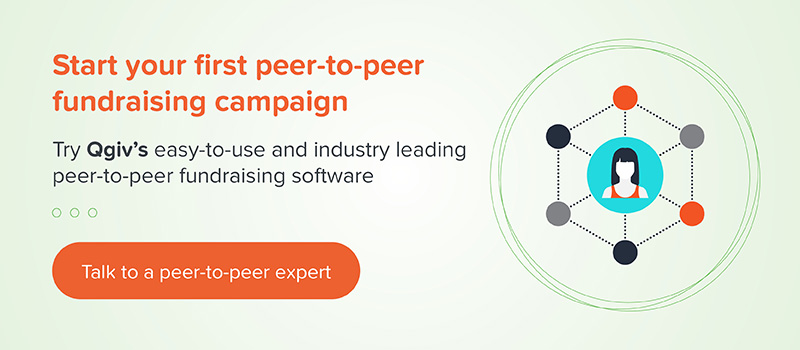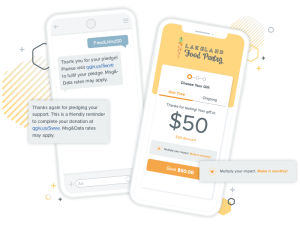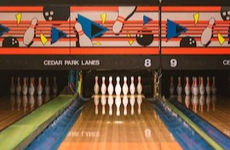Master peer-to-peer fundraising by connecting with your incredible supporters. Download eBook
Your success as a peer-to-peer fundraiser isn’t determined by your event. It’s not determined by your brand, your social media presence, or your website. And, as much as we love our super-cool peer-to-peer platform, it won’t single-handedly make you a success. Your success is determined by the element over which you have the least control… your participants’ commitment to raising money, their engagement, and their emotional connection to your nonprofit.
And getting them committed, inspired, and engaged is hard!
And there’s a reason for that. Put yourself in your participants’ shoes. Fundraising is intimidating if you haven’t done it before! You’re a seasoned fundraising profession. You know the best practices that result in more money raised. You know how to write a great ask. You know which social posts get attention and raise money. They don’t have the experience or expertise you do. If they’re going to succeed they need direction and encouragement from you.
You’ll need to have engagement strategies in place for when the initial excitement of registering for your peer-to-peer event wears off. You can’t make your fundraisers raise money. But you can make it easy and fun for them to be involved. Here are a few ways to do that!
Train Your Peer-to-Peer Fundraisers
You wouldn’t expect new staff to raise money without training. Don’t ask that of your participants!
When you train new fundraisers, you give them lots of pointers. You teach them best practices for setting up a donation page and telling their stories. They learn how to write a great fundraising email. Lots of training before they ever make an ask means they’re equipped for success.
Do the same for your participants! If they know how to raise money, they’ll be most enthusiastic about doing it. There are tons of ways to get them ready to advocate for you. What would work for your participants (and your staff?)
You could:
- Hold an in-person training session
- Set up an online “how to” session
- Make a short video with FAQs and tips
- Offer how-to guides or resources
- Make staff available to answer questions
Whatever you decide to do, remember that the idea is to embolden your fundraisers through education. Remember, fundraising is intimidating. Reassure your participants by training them!
Provide Templates for Participants
Writing an effective fundraising ask is an art. You know all the nuances that go into telling a great story or how to create a dynamite social post for your peer-to-peer event. You know your mission and history.
Your fundraisers don’t!
While you can’t do all your participants’ fundraising for them, you can give them resources that will help.
Give them templates they can use to communicate with friends and family! Templates for emails, social posts, and letters give them a framework for effective fundraising. They also save fundraisers time, which is important; they’re balancing raising money with jobs, family, and other obligations. The easier it is to ask for support, the more likely they’ll be to do so.
Some ideas for good templates to build include:
- Fundraising emails for friends, family, and co-workers
- Facebook posts about the event and why they’re participating
- Tweets
- Thank-you notes
- Social posts about their progress
And whatever else suits your event!
Another good idea is to give participants prompts that will help them build their peer-to-peer participant pages. Prompts will help them start telling their story and prevents writer’s block. Try asking questions like:
- What inspired you to participate in this peer-to-peer event?
- How has our nonprofit affected your life?
- Why should people donate this event?
- Why should other people participate?
Just a few simple questions will get them thinking… and will result in authentic pages that will inspire donors. The time you spend creating templates will pay off!
Stay Engaged with Participants
Your fundraisers lead busy lives. Stay in touch with them to keep your event at the top of their minds.
Schedule regular check-ins. Segmenting is important here! Do what you can to communicate based on their level of involvement. You don’t want to talk to someone who’s raised $2000 the way you’d talk to someone who hasn’t collected a donation yet. You’ll also want to think about different segments like teams, team captains, and badge holders. You can also direct emails to them based on the percentage of their goal they’ve reached. The more specific you can be with your coaching, the more effective your efforts will be!
Encouragement and coaching are equally important. Congratulate fundraisers for their victories and thank them for their work. Encourage participants who start slowly. Getting regular messages will inspire participants to stay involved. These participants are in a unique spot — they’re fundraisers, but they’re also donors and volunteers who are spending their time working for you. Showing them that they’re valuable and appreciated should be an important part of your communications with them.
Make Peer-to-Peer Fundraising a Game
Participants are passionate about your cause. That’s why they’re participating! But passion can’t sustain itself forever. That’s when adding gamification to your strategy comes in.
We know that making fundraising a game raises more money. After a participant’s excitement about being involved wanes, it’ll keep them engaged. Humans are hardwired to seek rewards for our activities. Gamification scratches that itch! Use classic elements like leader boards or progress thermometers to promote friendly competition. You can also build badges they can earn when they reach certain milestones.
Using badges to motivate fundraisers is a powerful tactic. Reaching a fundraising milestone and earning a badge is so fulfilling! There’s a lot of science behind why that’s true, but it all comes down to our brain chemistry. When we “win” something — even a non-tangible digital badge — our brains release the feel-good chemical dopamine. When users know they can earn a badge for getting more donors, recruiting more team-mates, or even just completing their profile, they’re more likely to finish that task. It’s good for you and fun for them!
Offer Incentives
Let’s be honest. Everyone loves a good incentive. Incentives are a goal to work toward, and they’re a great way to motivate yourself. People use incentives to motivate themselves all the time… and you can use them to motivate your peer-to-peer participants, too!
Incentives don’t have to be expensive to be effective. They just need to give participants something to work for! Offer incentives like:
- Event gear
- Tickets to another fundraising event or dinner
- Gift cards
- Nonprofit merchandise
- Gift bags
- Raffle tickets
- Or other prizes!
Offering real-life incentives makes online fundraising more effective. Give participants a tangible reason to post more and raise more money!
Encourage Creative Peer-to-Peer Fundraising
Fundraisers will stay more involved if they can raise money in their own way. Encourage participants to get creative! You might be amazed at some of the ideas your participants dream up.
At Qgiv, we’ve seen participants raise money at unique offline events. We’ve seen participants thrown dinner parties where guests are invited to donate on a laptop or computer set up in their home. Participants have hosted bar crawls or special events at breweries for their donors. They’ve dedicated their birthday to an event they support, and they’ve organized coffee shop meetups. All have them have worked well! Offline fundraising also boosts your organization’s visibility in the community.
Combine these elements to build an excited participant base. THAT is the key to a successful fundraiser!
Additional resources:
- https://www.qgiv.com/peer-to-peer-fundraising
- http://www.qgiv.com/blog/top-peer-to-peer-fundraising-platforms/
- http://www.qgiv.com/blog/10-peer-to-peer-fundraising-ideas/








